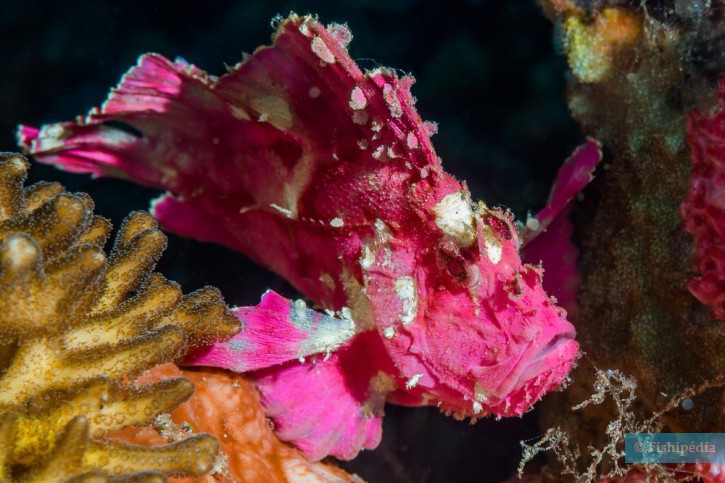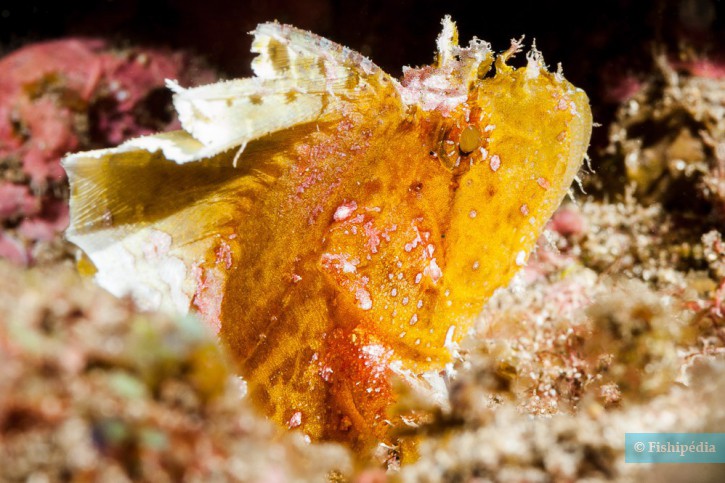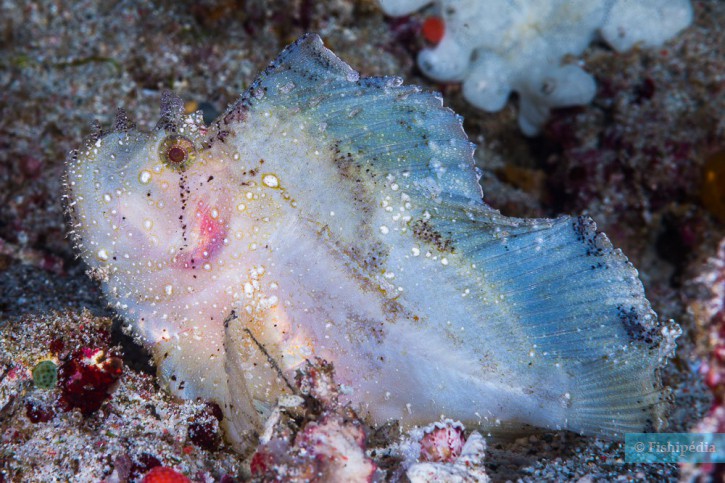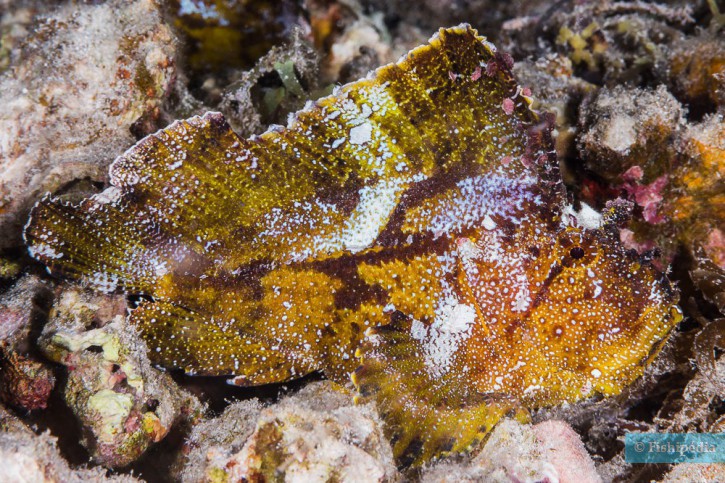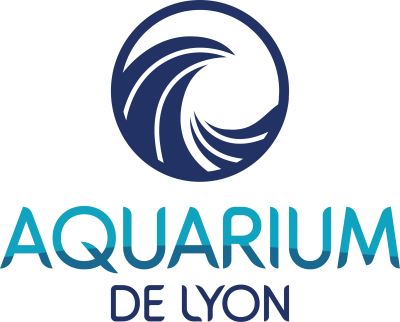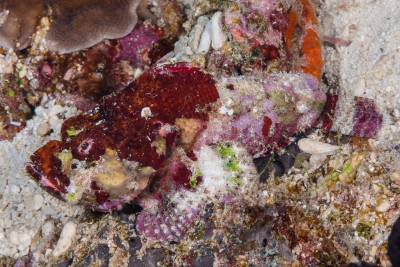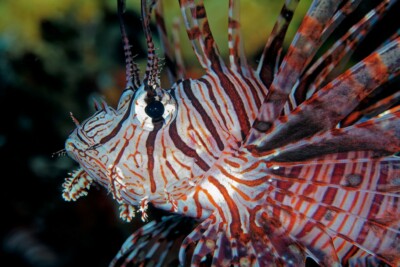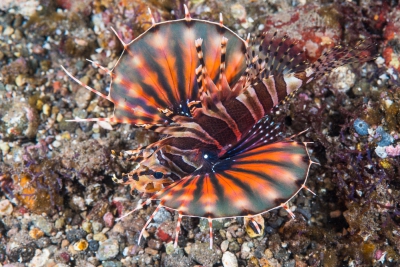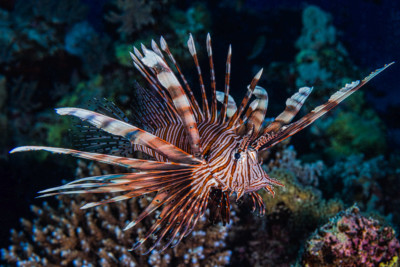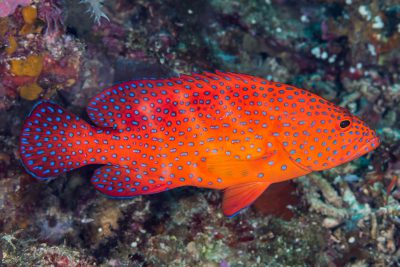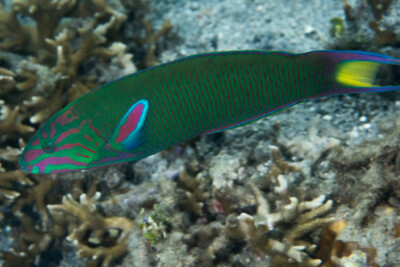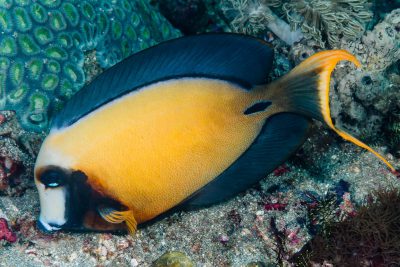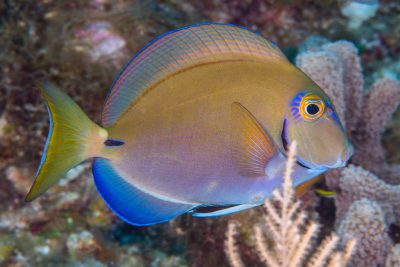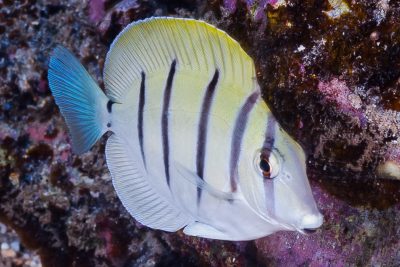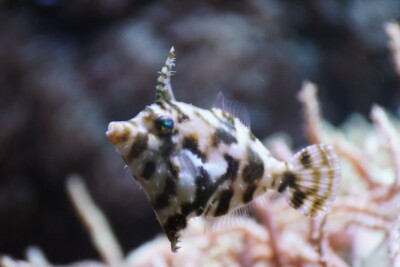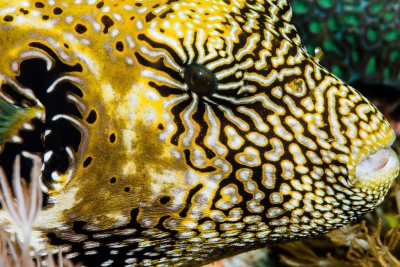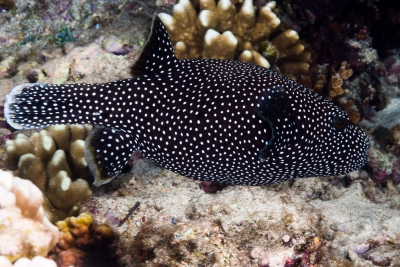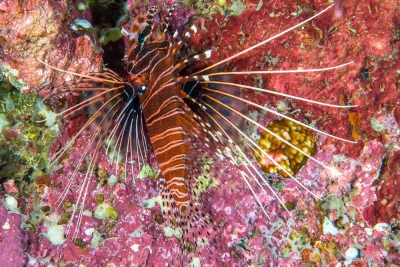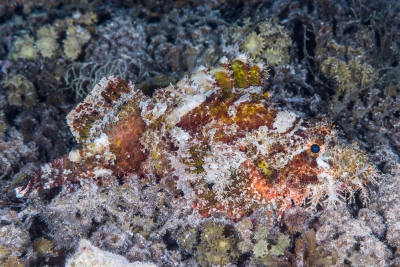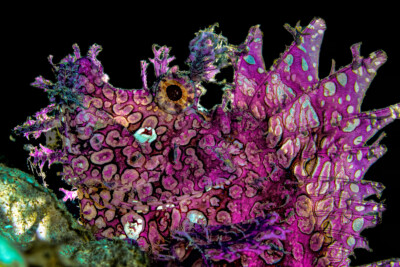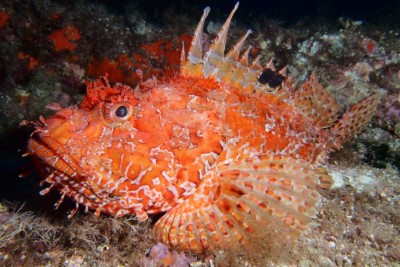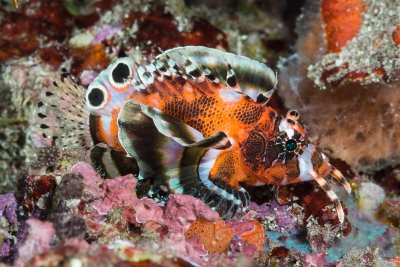leaf scorpionfish
| Family | Scorpaenidae |
|---|---|
| Genus | Taenianotus |
| IUCN category (World) | LC |
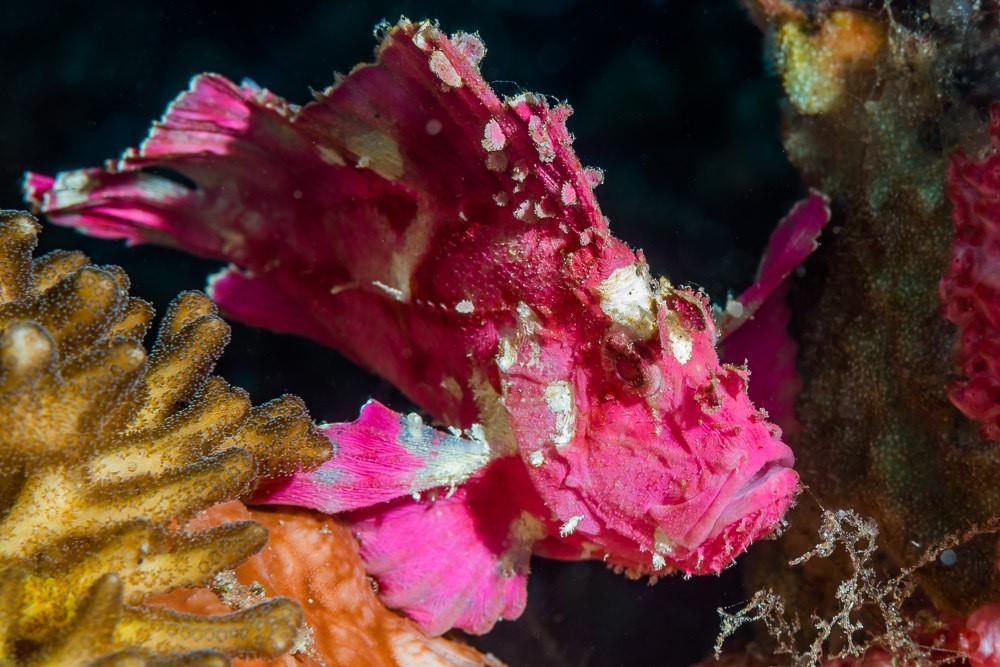

Introduction
The Taenianotus triacanthus is a tropical predator found from India to southern Australia. It is also listed in Hawaii and the Tuamoto Islands.
Who is it?
Morphology
-
Type
-
Average size8 cm
-
Maximum size10 cm
-
ShapeUnclassifiable
-
Mimicryleaf
-
Type
-
Average size8 cm
-
Maximum size10 cm
-
ShapeUnclassifiable
-
Mimicryleaf
How to recognize This fish ?
The leaf scorpionfish measures between 8 and 10 cm. This fish is unicolore with a predominantly rouge, jaune, noir and marron body.
Sexual dimorphism
Dimorphism not specified.
Behaviour & Life cycle
-
dietcarnivorous
-
Sociabilitysolitary
-
territorialNo
-
Way of livingnocturnal
The leaf scorpionfish resides near the bottom. It is a species that spends most of its time motionless among algae or seagrass. Its slow and deliberate movements resemble a leaf falling from a tree.
This fish is a fierce little predator especially effective in hunting crustaceans and small fish. Like most of its kind, it appears to be active mainly at night.
Reproduction
-
Reproductionovipare qui pond en eau libre
The leaf scorpionfish is a fish ovipare qui pond en eau libre.
Risks for humans
-
VenomousYes
This species is venomous and can cause serious injuries when touched.
Origin and distribution
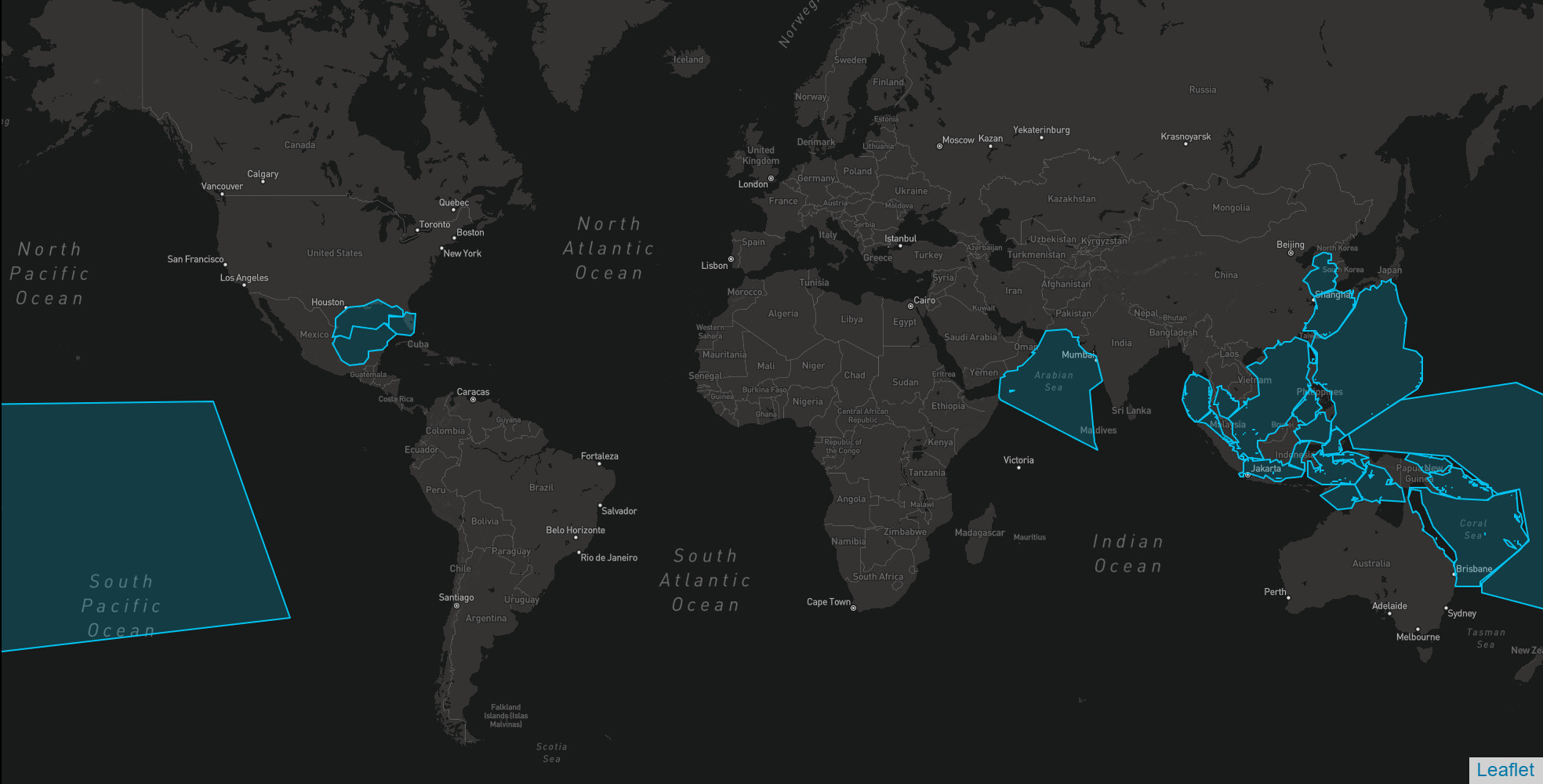
What is its habitat?
Natural environment characteristics
-
Temperature22 - 26 °C
-
Depth5 - 20 m
-
FlowMedium, Slow and Stagnant
Biotope presentation
The leaf scorpionfish is most often found at a depth between 5m and 20m. However, it is not impossible to find this species at other depths.
Species of the same biotope
Main recommendations for fishkeeping
Deontology
In order to preserve wildlife, if you acquire this animal, it must not be released into the wild. See also, the Fishipedia charter.
Fishipedia supports the practice of responsible and environmentally friendly aquarium keeping. We encourage maintenance if it is motivated by a desire to understand the biological functioning of living things and if it is done with respect for animal life.
We believe that aquaristics is an opening to the discovery of aquatic environments, especially freshwater, and that this knowledge is necessary to better protect and respect these environments. Logically, we refute the compulsive purchase of animals that would not find a sufficient and / or adapted place in the host aquarium.
Our recommendations
-
Min volume200 liters
-
Population min1
-
Temperature22 - 26 °C
-
pH (acidity)8.2 - 8.4
Characteristics
-
Difficulty breedingmoderate
-
Robustnessrobust
-
Behaviourslightly aggressive
-
Availabilityoccasional
General reminders
It is strongly advised to read the complete dedicated file and to get information on the feedbacks of maintenance of the envisaged animal, this to avoid any potential conflict whose end result is generally the death of the individual (or the other inhabitants). It is important not to overload your aquarium to limit pollution. This will make maintenance easier.
Beware, as this species is potentially dangerous to humans, it requires for its maintenance the obtaining of a "certificate of capacity of breeding". For professionals, it is necessary to have a "certificate of presentation to the public".
General reminder on maintenance datas
Le démarrage d'un aquarium est une partie primordiale pour l'équilibre et le bien-être des poissons. Lorsque l'on met en eau un aquarium, l'eau passe naturellement par un cycle biologique : le cycle de l'azote. Celui-ci dure environ trois semaines. Tous les 2 jours, nous vous conseillons de tester votre eau jusqu'à ce que le taux de nitrite soit à zéro pendant plusieurs jours d'affilée.
Pour accélérer ce cycle, vous pouvez utiliser un activateur de bactéries comme JBL Denitrol. Cette solution riche en bactéries vivantes et enzymes permet une mise en place rapide du cycle de l'azote. Les poissons peuvent alors être introduits plus rapidement.
Il est important de tester l'eau de son aquarium régulièrement pour maintenir un environnement sain pour les poissons et les autres habitants. Les tests d'eau permettent de mesurer les niveaux de différents paramètres tels que le pH, la dureté totale, ainsi que les taux de nitrates, de nitrites et d'ammoniaque.
Pour réaliser ces tests, vous pouvez utiliser des produits d'analyse spécialisés tels que JBL ProScan qui permet de réaliser un diagnostic de l'eau directement via un smartphone. Il existe également des coffrets de tests plus classiques de bandelettes, comme JBL PROAQUATEST.
En cas d’usage de l’eau du robinet, vous pouvez utiliser un conditionneur d’eau de type Biotopol de JBL pour éliminer les substances nocives comme le chlore, le cuivre, le plomb et le zinc. Une eau trop dure ou trop calcaire peut être inadaptée à de nombreuses espèces tropicales d’eau douce. Si nécessaire, vous pouvez la couper avec de l’eau osmosée ou de pluie filtrée afin d’obtenir une dureté plus adaptée aux besoins de vos poissons et de vos plantes. Les conditionneurs d'eau garantissent une meilleure santé aux poissons et une meilleure croissance des plantes.
Chlorine and chloramine are dangerous for the health of animals. Used to disinfect water, these agents are present in significant quantities in tap water. We recommend using an anti-chlorine agent every time you change the water. In addition to chlorine, treatments and medicines sold for aquarium use sometimes contain dangerous heavy metals in high doses.
Specific needs for the leaf scorpionfish
The leaf scorpionfish is a marine species which lives naturally at a temperature between 22 °C and 26 °C. Nitrate levels should remain below 50mg/L. To keep the water clean and unpolluted, plan on changing 20% to 30% of the water volume each month. In seawater, it is also possible to remove nitrates using one of the following methods: Jaubert, denitrator on sulfur, biopeletts, vodka method.
The breeding of this species is accessible on condition of being well informed about its needs in aquarium . Any cohabitants must be chosen with care to avoid the loss of animals.
This species is generally available in specialized shops or from aquarium clubs. Specimens that have been bred for a long time are easier to breed, but special water parameters must be respected.
Formal incompatibilities
Cohabitation & Environment
In a community aquarium context, this species should be kept in a minimum volume of 200 liters.
To best reproduce the biotope of this species, you can cover the bottom of the tank with sand and put a pile of stones to form caves.
Tips for feeding
The leaf scorpionfish is carnivorous.
This species does not appreciate being fed with freeze-dried food (flakes...). Some specimens will never eat this type of food.
Feed animals in moderation to maintain good water quality. Meals should be eaten within 2–3 minutes, served in several small portions rather than a single large ration.
Uneaten food quickly decomposes, releasing ammonia, nitrites, and nitrates, which disturb the aquarium’s biological balance.
Make sure each species can access food properly, slower or bottom-dwelling individuals may require targeted feeding.Reproduction protocol
-
egg-laying protectionNo
Hybridization risks
In general, it is advised not to mix several species of the same genus or different varieties of the same species, to avoid the risks of hybridization.
These animals might interest you
To go further
Sources & Contributions
Participation & Validation
The Fishipedia team and specialist contributors are committed to providing high-quality content. However, although the information comes from scientific sources or testimonials from specialists, the cards may contain inaccuracies.

Benoit Chartrer
Translation
Translation done with the valuable contribution of our translators, who make this information available to a wider audience. We sincerely thank them for their commitment.
Scientific partners
Tags
Species of the same family
Species of the same biotope
